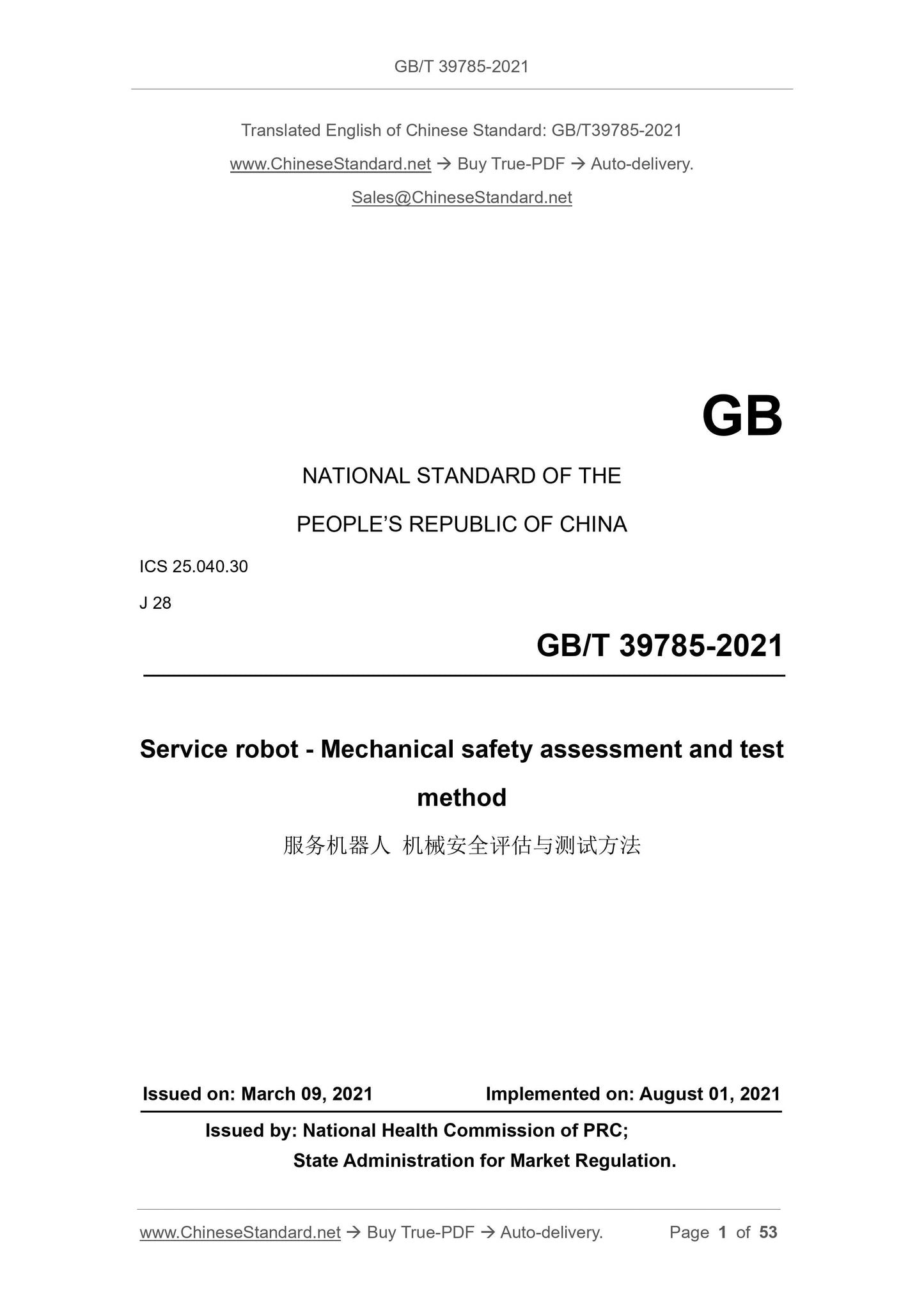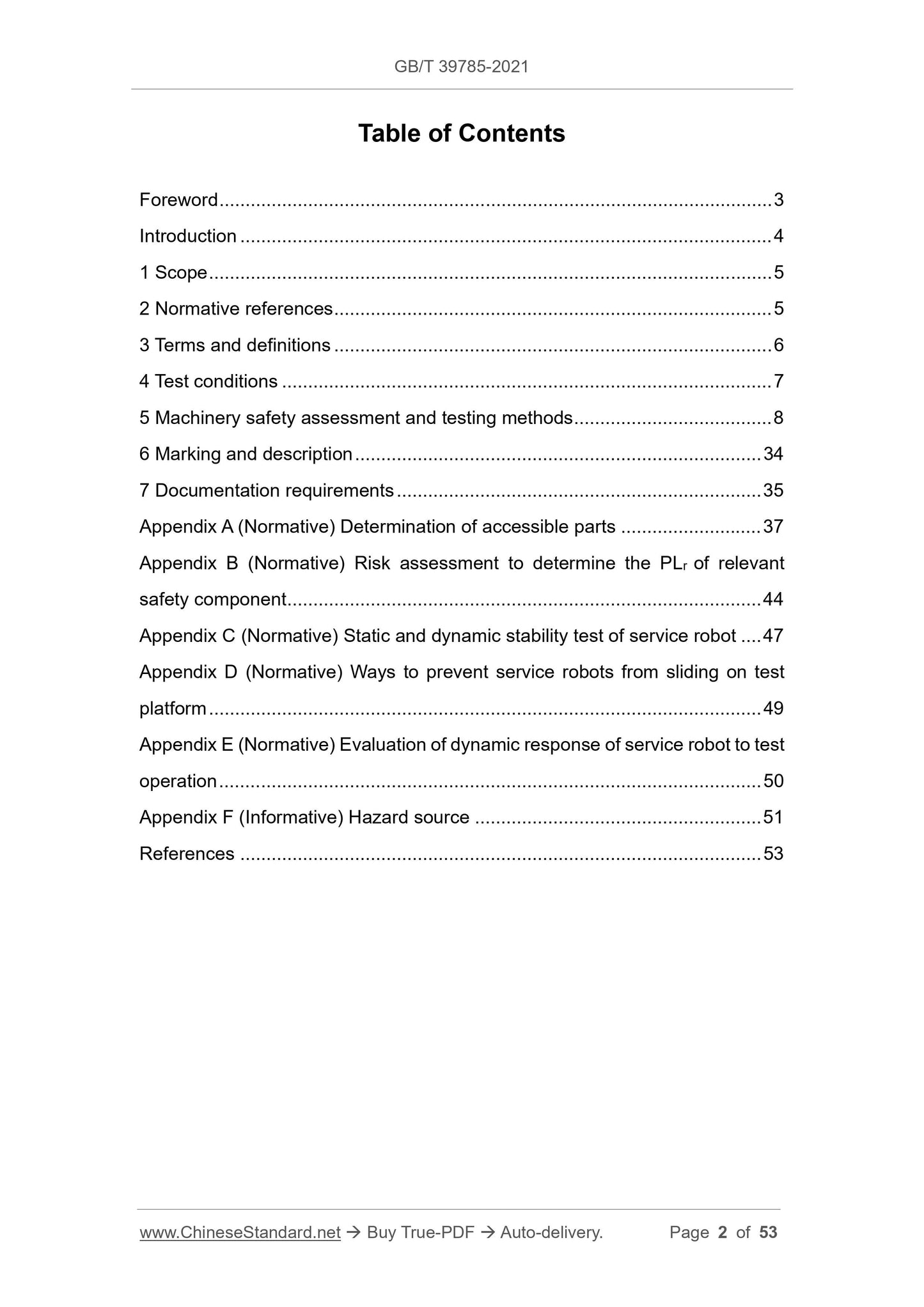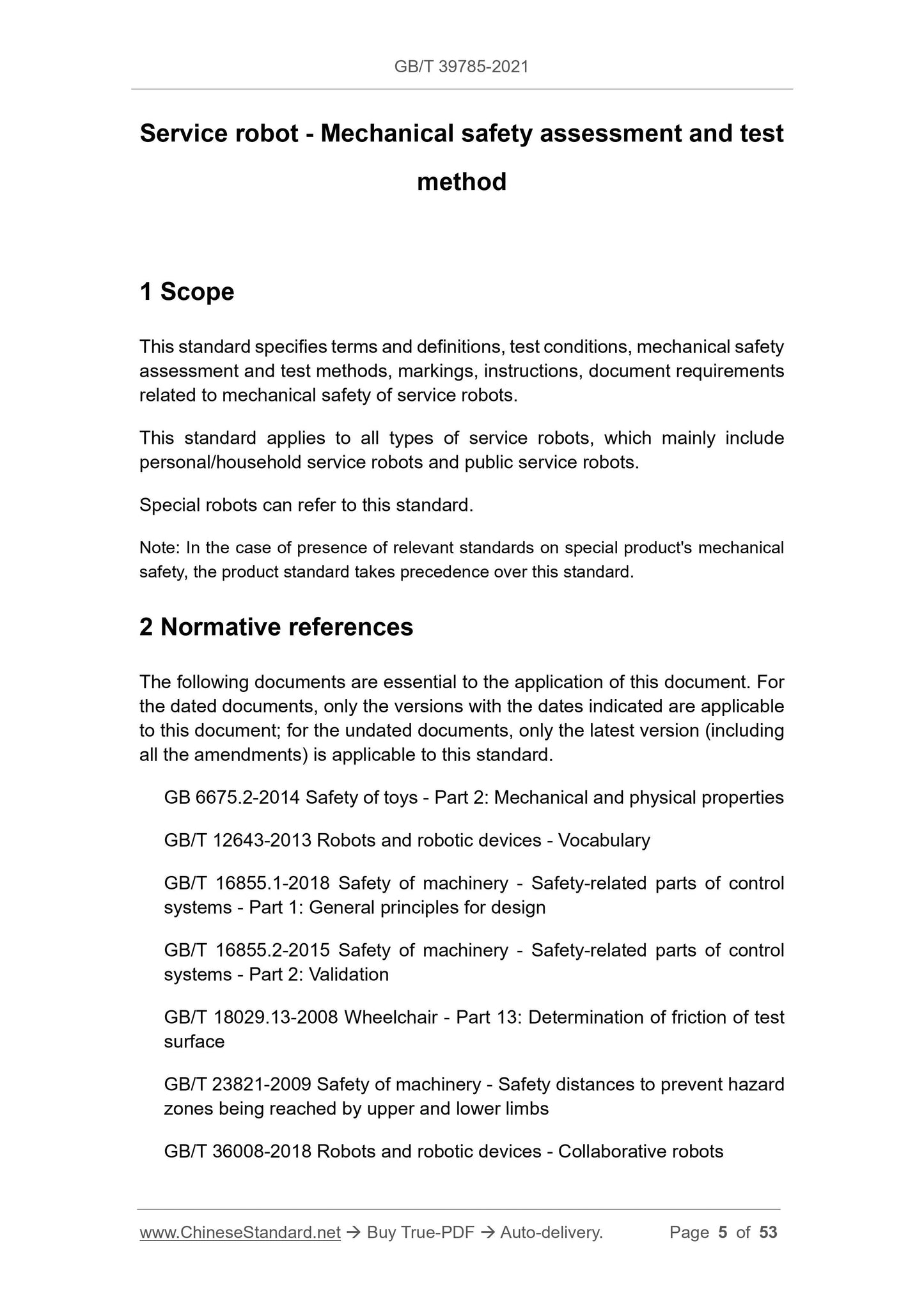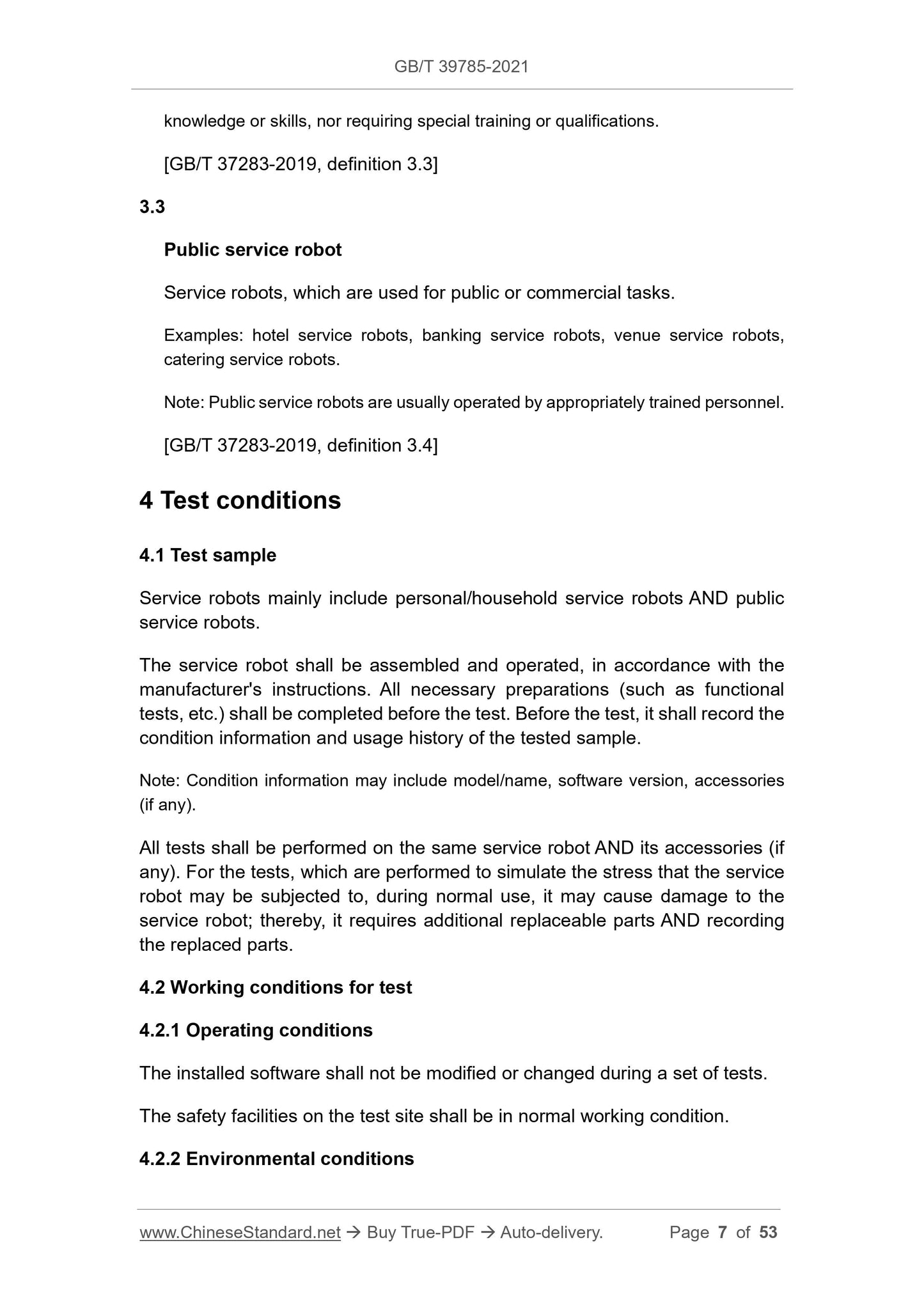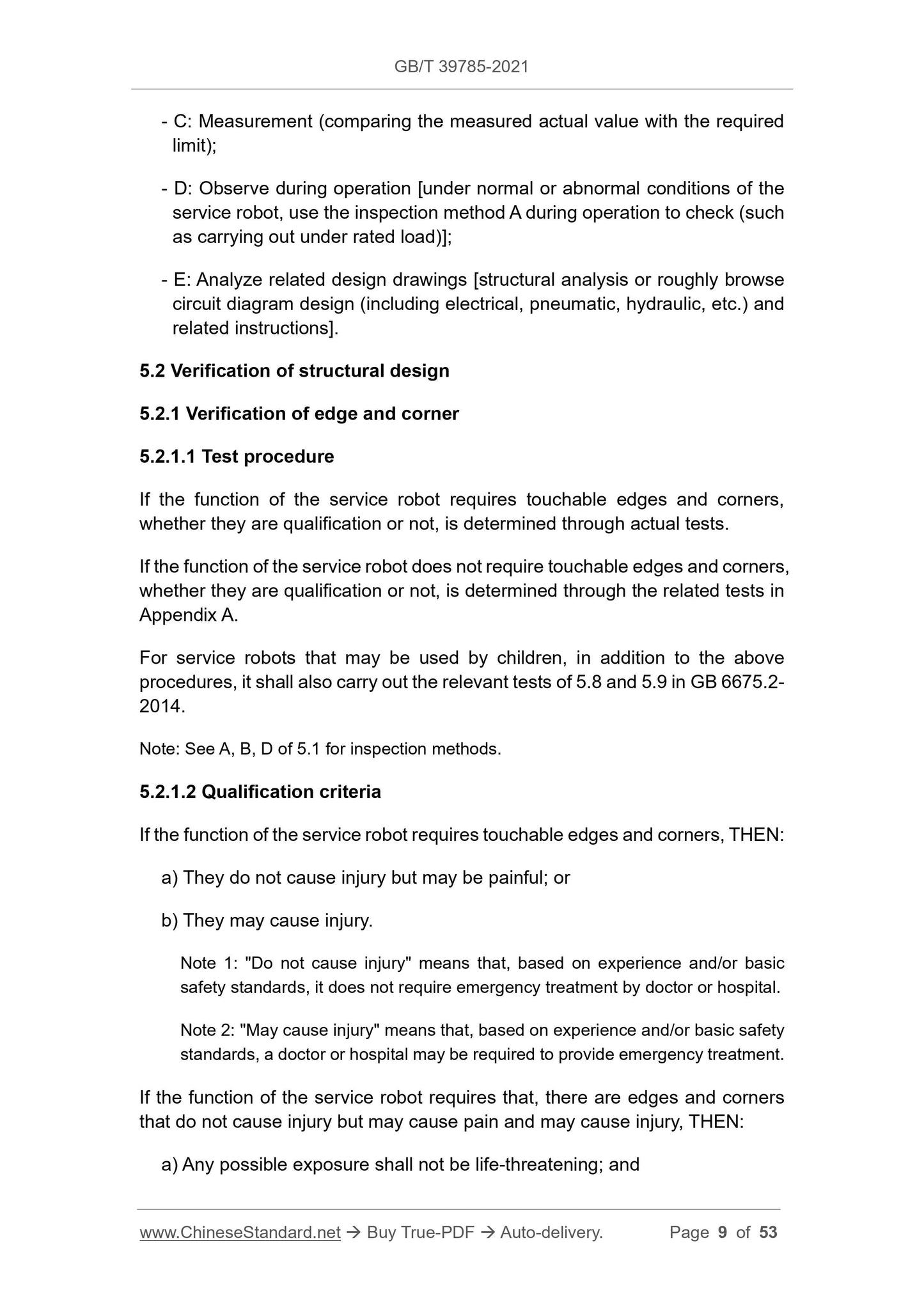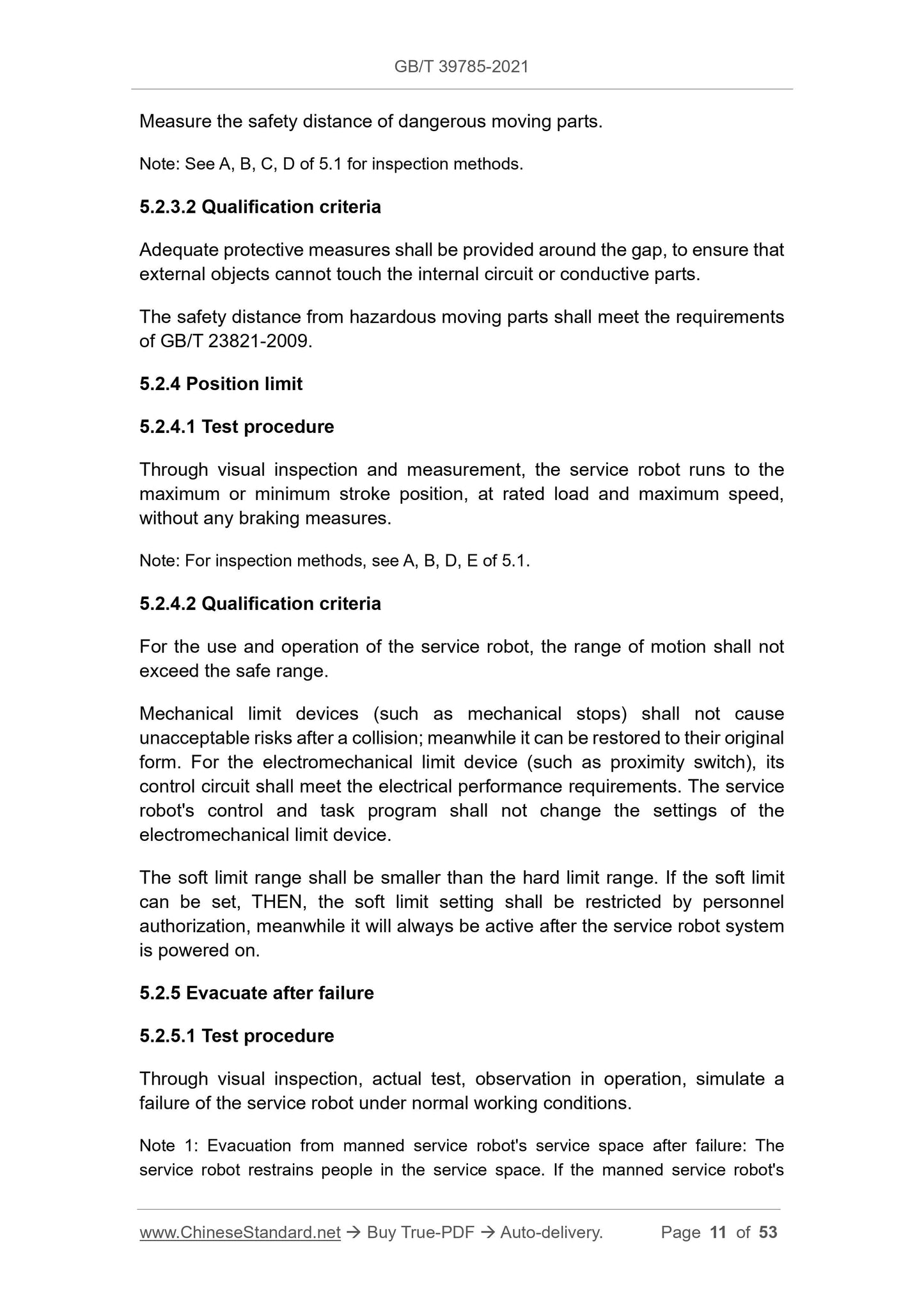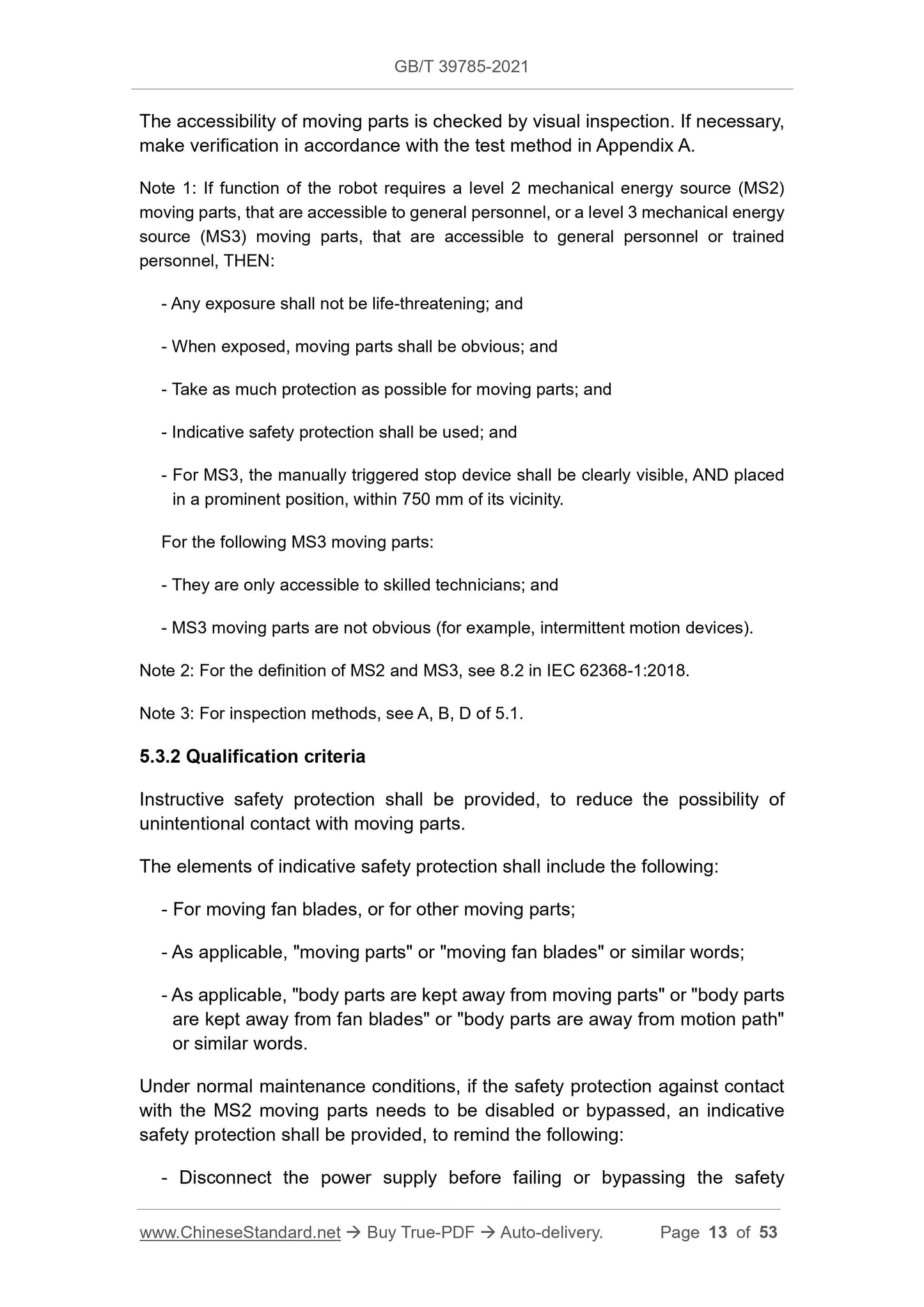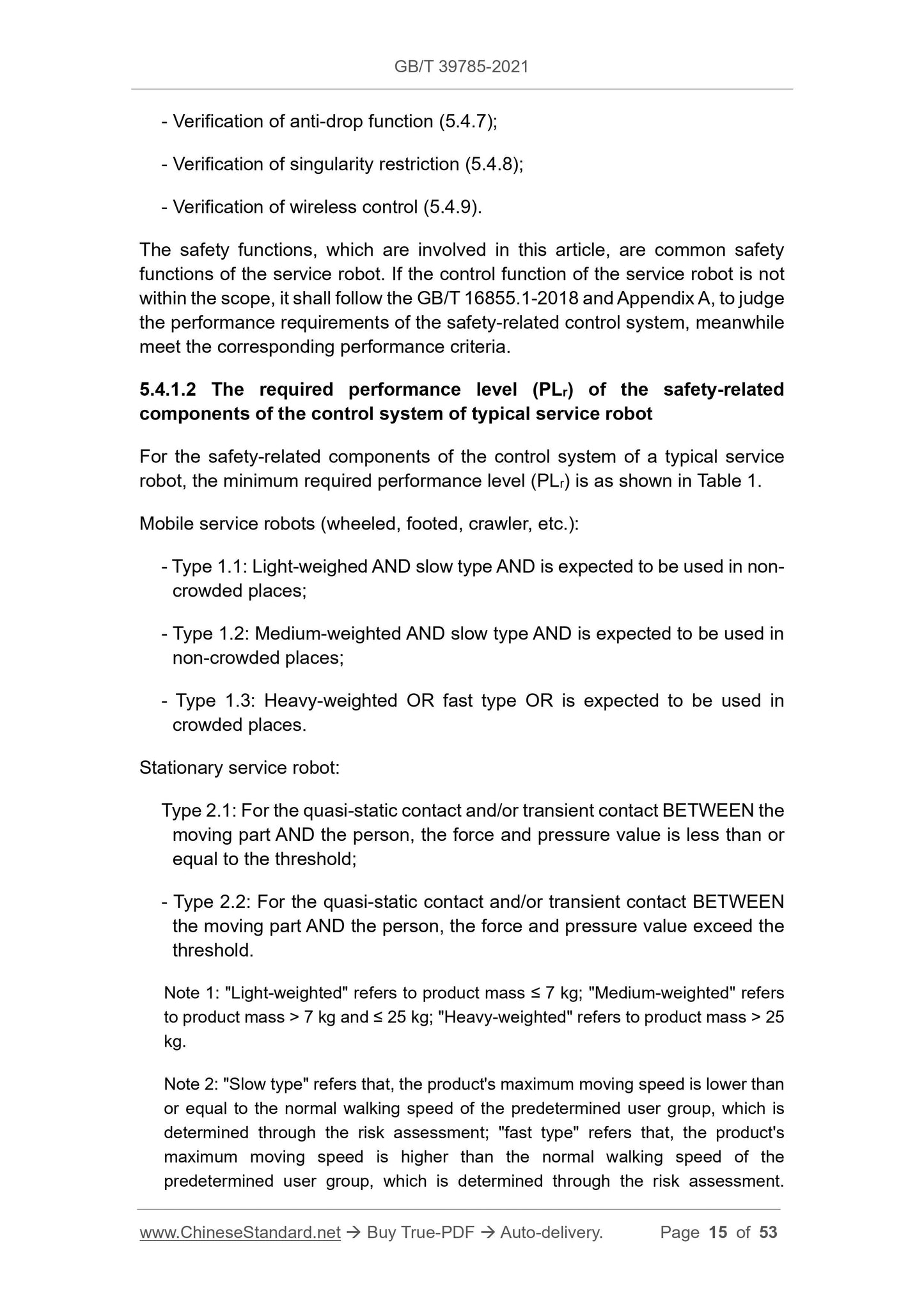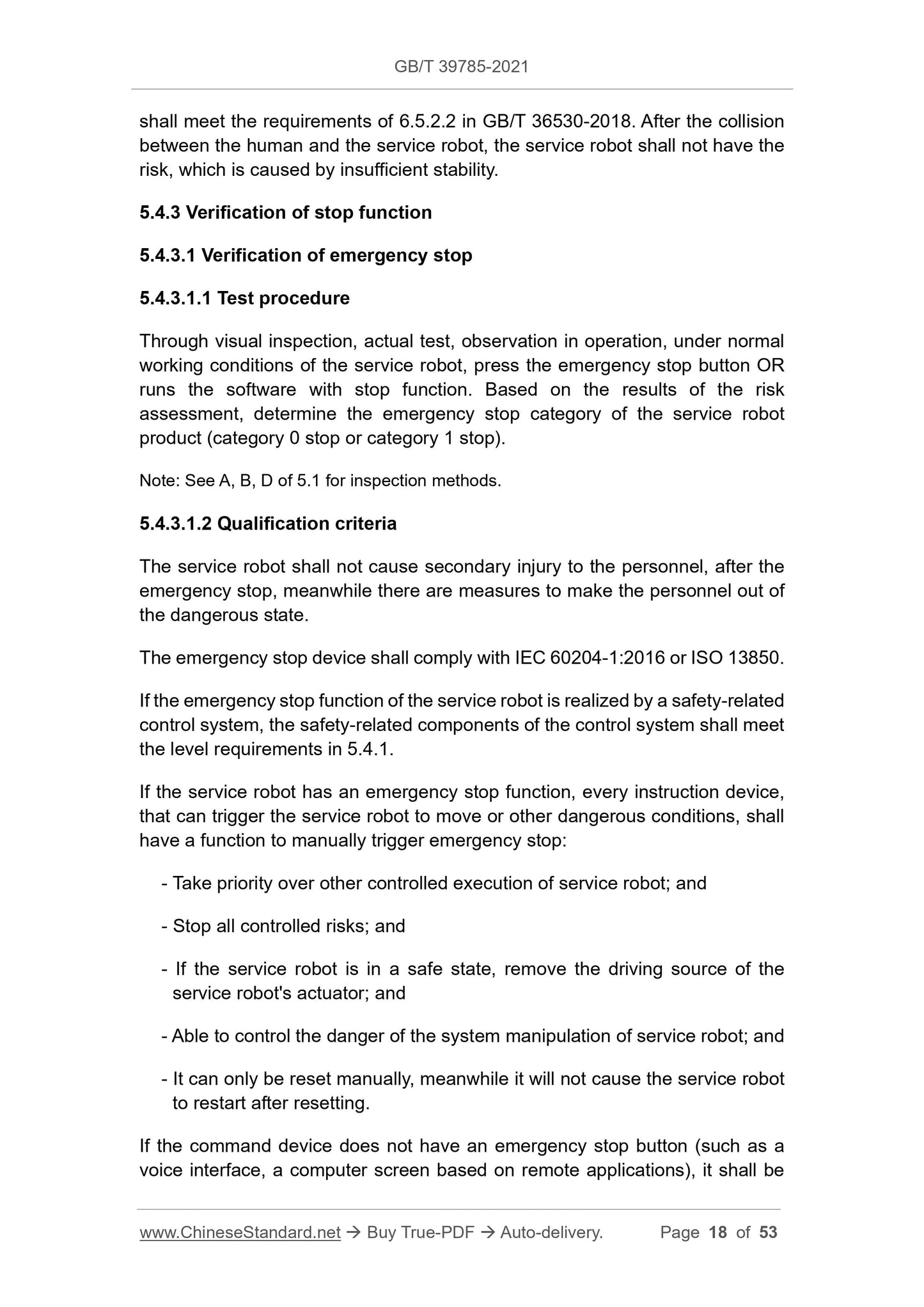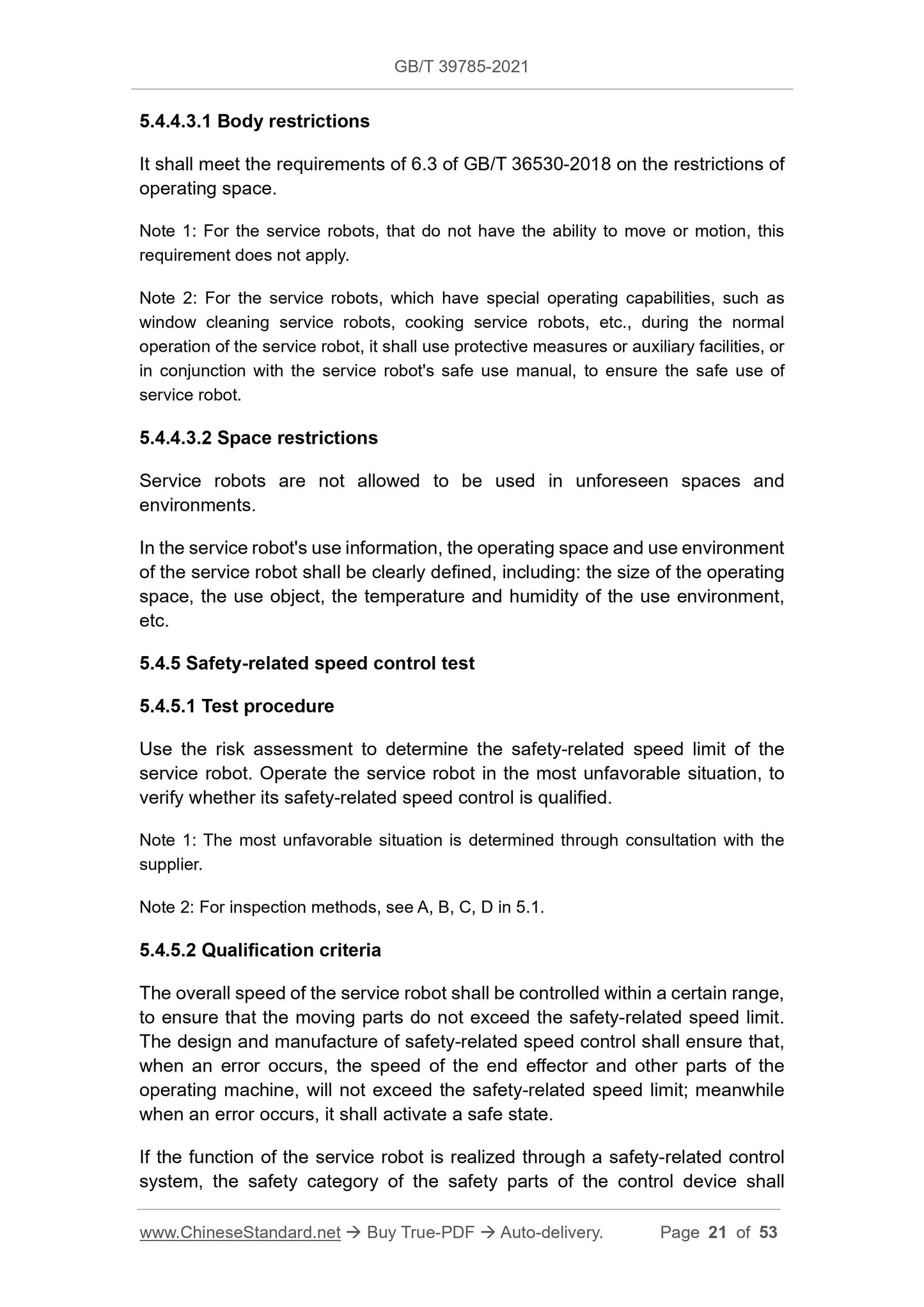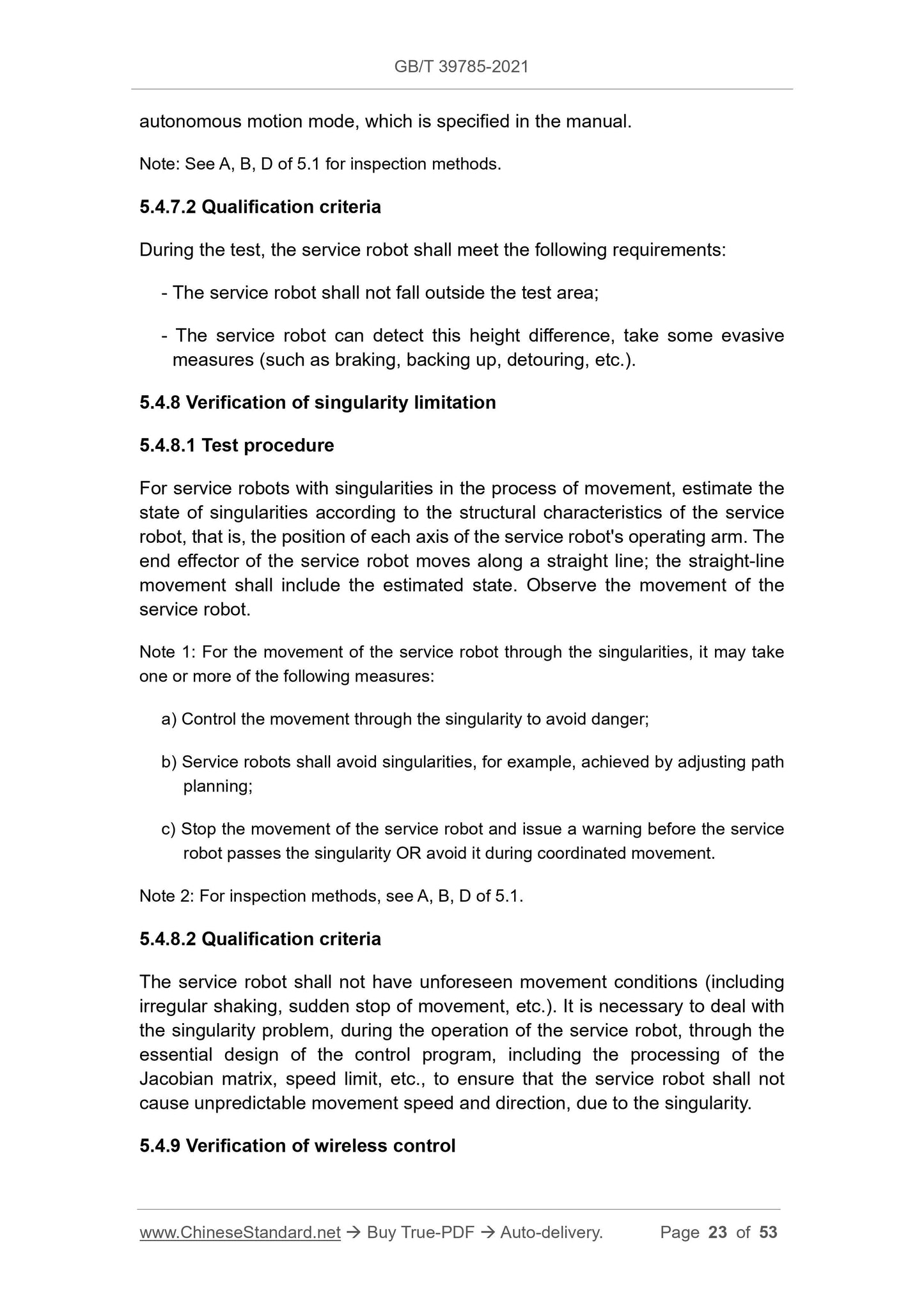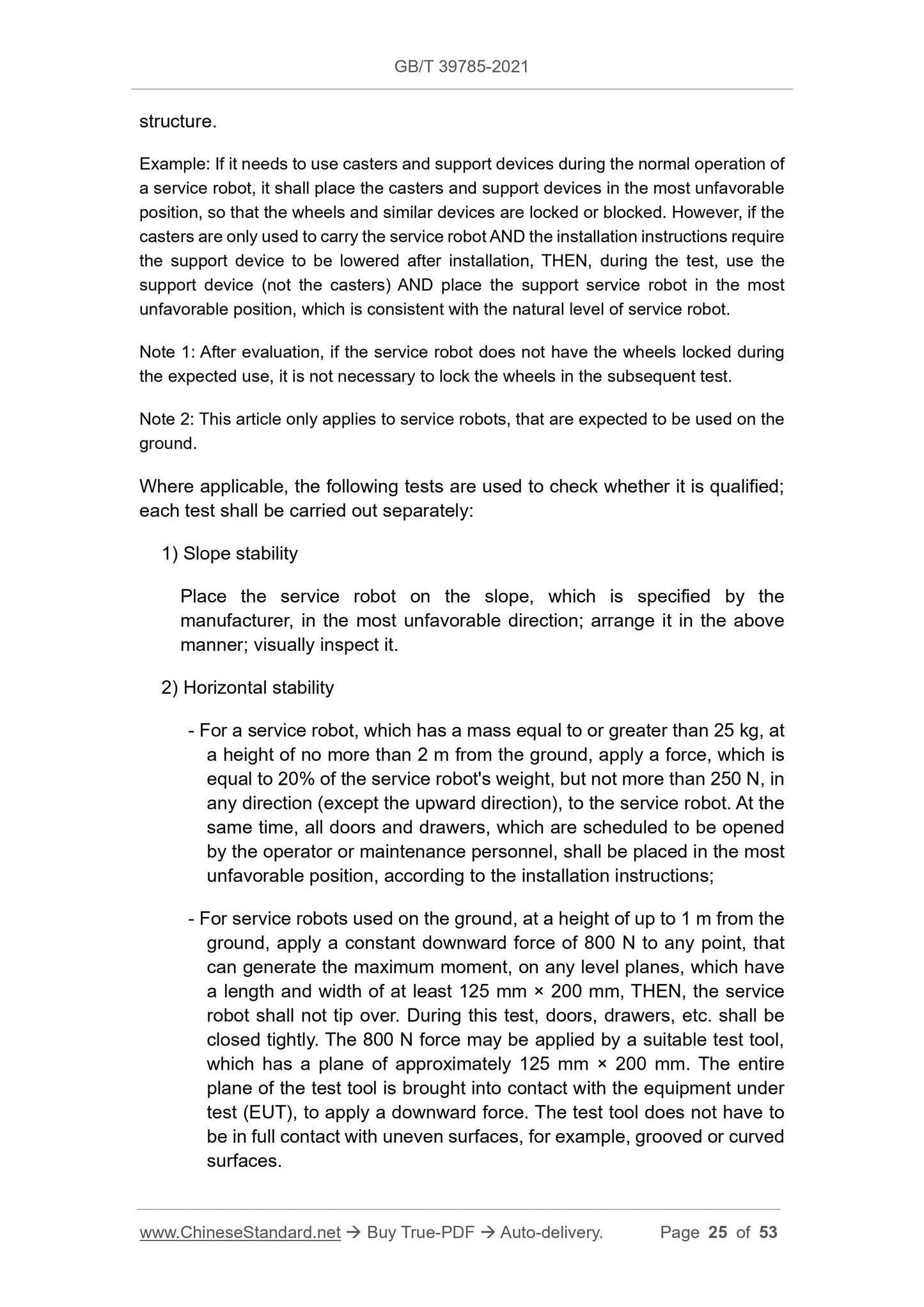1
/
of
12
www.ChineseStandard.us -- Field Test Asia Pte. Ltd.
GB/T 39785-2021 English PDF (GB/T39785-2021)
GB/T 39785-2021 English PDF (GB/T39785-2021)
Regular price
$500.00
Regular price
Sale price
$500.00
Unit price
/
per
Shipping calculated at checkout.
Couldn't load pickup availability
GB/T 39785-2021: Service robot - Mechanical safety assessment and test method
Delivery: 9 seconds. Download (and Email) true-PDF + Invoice.Get Quotation: Click GB/T 39785-2021 (Self-service in 1-minute)
Newer / historical versions: GB/T 39785-2021
Preview True-PDF
Scope
This standard specifies terms and definitions, test conditions, mechanical safetyassessment and test methods, markings, instructions, document requirements
related to mechanical safety of service robots.
This standard applies to all types of service robots, which mainly include
personal/household service robots and public service robots.
Special robots can refer to this standard.
Note. In the case of presence of relevant standards on special product's mechanical
safety, the product standard takes precedence over this standard.
Basic Data
| Standard ID | GB/T 39785-2021 (GB/T39785-2021) |
| Description (Translated English) | Service robot - Mechanical safety assessment and test method |
| Sector / Industry | National Standard (Recommended) |
| Classification of Chinese Standard | J28 |
| Word Count Estimation | 34,311 |
| Issuing agency(ies) | State Administration for Market Regulation, China National Standardization Administration |
Share
